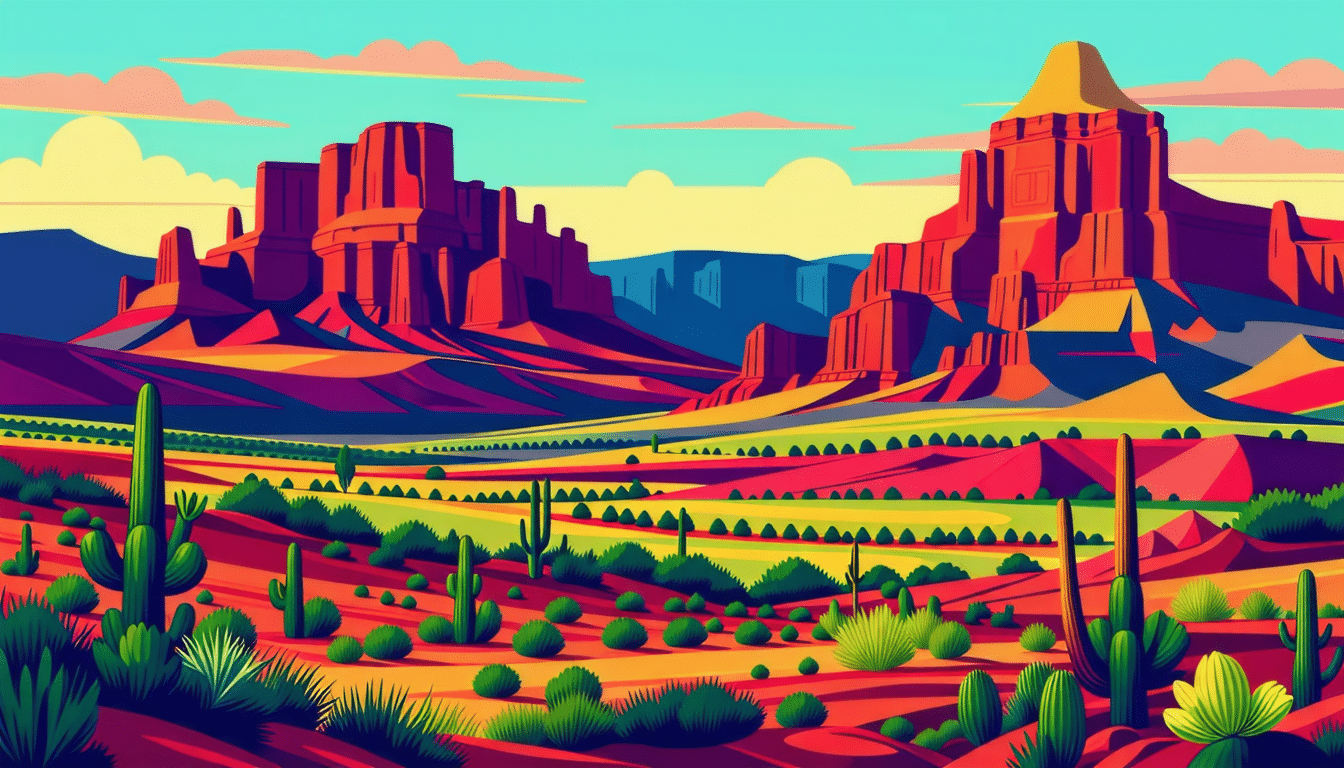In the heart of Arizona lies a little-known treasure, a true spectacle for the eyes: a national park with breathtaking desert landscapes. Let yourself be enchanted by the wild and grandiose beauty of this exceptional place.
The glow of the Saguaro Desert
Let’s explore the extraordinary Saguaro National Park, a treasure hidden in Arizona which amazes with its breathtaking desert landscapes. Nestled in the region ofArizona Upland, this national park takes its name from the majestic Saguaro cactus, emblem of the desert Sonora.
This giant cactus, with its towering arms and heights of up to 45 feet, is a true wonder of nature. Once threatened, the Saguaro population now numbers approximately 2 million individuals on this 91,000-acre preserve.
Multiple seasons and their charms
The region is distinguished by its five unique seasons: spring, dry “pre-summer”, summer monsoons, fall and winter. In May and June, during the pre-summer season, although the heat is intense, the crowns of white flowers of the Saguaro cacti bloom and transform the desert into an enchanting spectacle. A winter surprise can even include a light dusting of snow, adding a magical touch to the desert.
Exploring the Tucson Mountain District
The western section of the park, known as the Tucson Mountain District, is a true sanctuary for cactus lovers. If you are pressed for time, the Bajada Loop Drive of 6 miles offers breathtaking views of cactus-filled landscapes.
Highlights include the Signal Hill picnic area with its short trail leading to the Signal Hill petroglyphs, more than 1,000 years old, and the trail Valley View Overlook, which offers an impressive view of the vast Avra valley.
Traditions and conservation
Whether you take the trails on foot, by bike or by car, this part of the park invites you to an intimate encounter with these majestic cacti. Saguaros, which can take up to eight years to reach an inch in height, are protected by law in Arizona. Since 2018, rangers have even started microchipping these cacti to discourage poachers, as the most spectacular specimens can sell for exorbitant prices.
In June, just before the monsoons, members of the Tohono O’odham Nation harvest the pulpy red fruits of cacti in an ancestral tradition dating back thousands of years.
Explore the Rincon Mountains District
The eastern section of the park, known as the Rincon Mountains District, is a hiker’s paradise. Less frequented, this more mountainous region offers breathtaking hiking trails, including the Cactus Forest Trail of 10 miles, an easy walk where, in spring, desert wildflowers create a striking visual spectacle.
Remember that in the desert, animals are mainly active at dawn and dusk. Adopt this behavior to make the most of your visit while staying safe. Check out the rangers’ hiking safety tips to know how much water to bring and when to leave.
Moments of beauty at sunset
To capture magical moments, go to the observation point of Javelina Rocks at sunset. These beautifully ridged rock formations offer spectacular views and the best chance of spotting javelinas, shy wild pigs, late in the day.
THE Rincon Mountain Visitor Center is the ideal starting point for exploring this region, particularly the Cactus Forest Loop Drive 9 miles, perfect for a bike ride. And know that BikeTucson can deliver rental bikes directly to the trail entrance.








